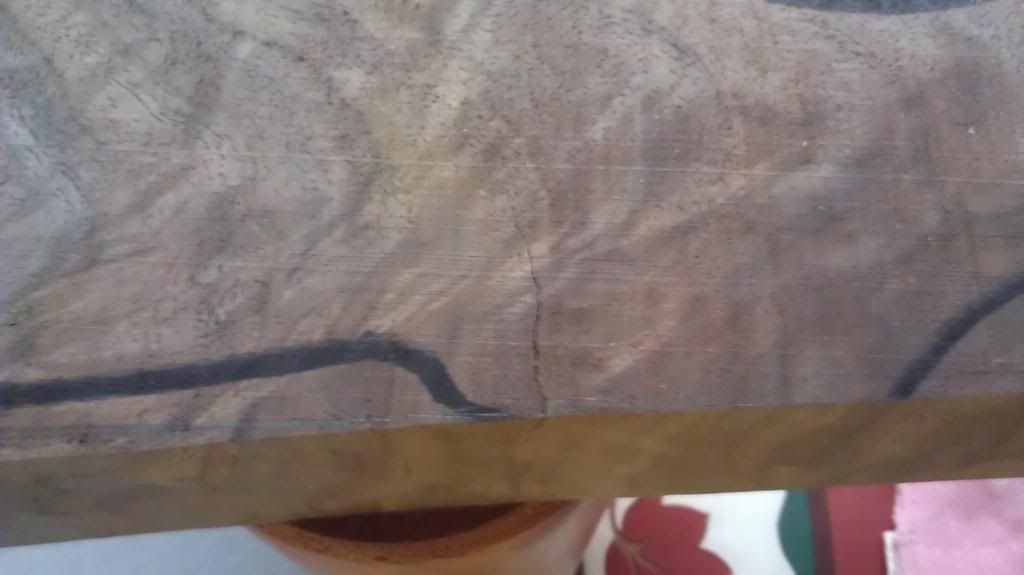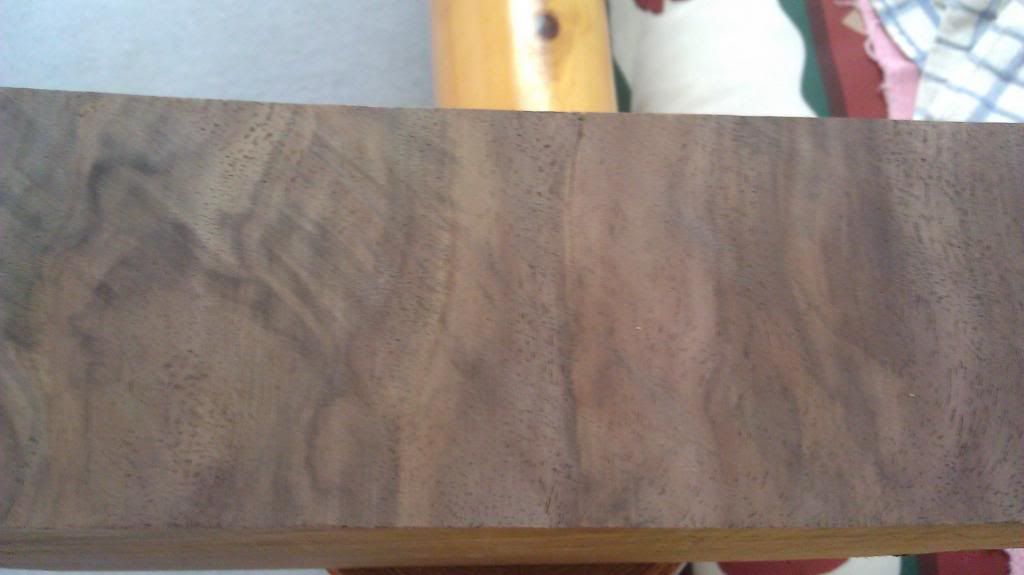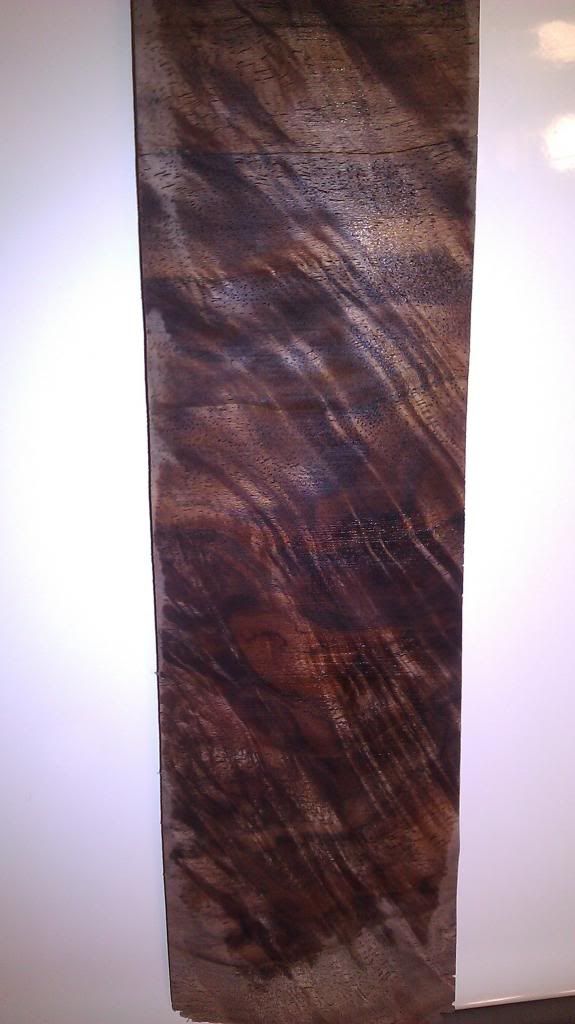- Joined
- Mar 26, 2013
- Messages
- 220
- Reaction score
- 72
Been holding on to this piece of highly figured walnut "groin" for a long time and it was dried before I got it. Been stored in my gun room for years. A while back I saw the beginning of a small crack and decided to go ahead and rough out the stock (just a back stock gun for an underhammer action) and the crack does extend deeper than I had hoped. I think it will likely disappear as I form the stock but want to attack it now. I would be heartbroken to not be able to use this piece...the color and figure are unbelievable in person.
Looking for options on arresting the crack now before I proceed any further. Don't want to take any chances. It's a little hard to see in second picture but directly below crack location in first photo. Thanks.


Looking for options on arresting the crack now before I proceed any further. Don't want to take any chances. It's a little hard to see in second picture but directly below crack location in first photo. Thanks.








